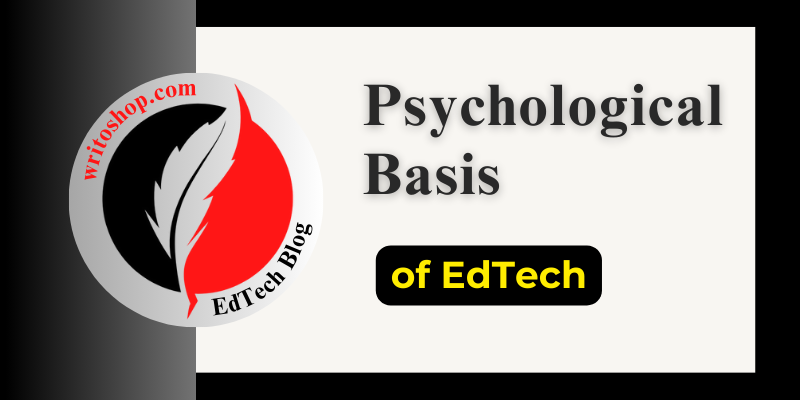
Educational technology isn’t just about devices and software—it’s deeply rooted in psychological theories of learning.
Understanding how students think, feel, and learn helps educators design more effective teaching strategies using technology.
These psychological foundations shape everything from app interfaces to adaptive learning algorithms.
Here are the top 9 psychological bases that influence the development and application of educational technology.
1. Behaviorism
Focus: Observable behavior and reinforcement
Pioneers: B.F. Skinner, Ivan Pavlov
Behaviorism forms the basis of drill-and-practice software, rewards-based learning, and gamification in EdTech. Tools that offer immediate feedback and rewards for correct answers (like Kahoot! or Duolingo) operate on behaviorist principles—reinforcing learning through repetition and external motivation.
2. Cognitivism
Focus: Mental processes like thinking, memory, and problem-solving
Pioneers: Jean Piaget, Jerome Bruner
Cognitivism highlights how learners process, store, and retrieve information. Educational technologies based on this theory use structured content, concept mapping, and chunking (breaking information into smaller parts), which you see in platforms like Khan Academy or Coursera.
3. Constructivism
Focus: Learning as an active, constructive process
Pioneers: Lev Vygotsky, John Dewey
Constructivism supports tools that encourage exploration, discussion, and collaboration. EdTech platforms that allow students to create projects, solve problems, or simulate real-world tasks—like Minecraft Education or Tinkercad—are grounded in this theory.
4. Social Learning Theory
Focus: Learning through observation and interaction
Pioneer: Albert Bandura
Social learning theory is the backbone of collaborative learning platforms, video-based learning (like YouTube Edu), and peer feedback tools. It emphasizes the importance of modeling and social context in learning.
5. Motivational Theories
Focus: Internal and external drives that influence learning
Pioneers: Abraham Maslow (Hierarchy of Needs), Deci & Ryan (Self-Determination Theory)
Motivational theories explain why learners stay engaged with educational technology. Features like progress bars, badges, leaderboards, and goal setting tap into intrinsic and extrinsic motivation—keeping learners focused and driven.
6. Multiple Intelligences Theory
Focus: Varied types of intelligences beyond just verbal and logical
Pioneer: Howard Gardner
This theory encourages the use of multimedia tools (videos, music, movement, visuals) to cater to different learners—visual-spatial, musical, kinesthetic, and more. EdTech platforms offering customized learning paths often draw from this principle.
7. Information Processing Theory
Focus: The human brain as an information processor
Pioneers: Atkinson and Shiffrin
This theory informs how educational software is designed to optimize memory retention—using techniques like visual aids, repetition, mnemonics, and active recall (e.g., flashcard apps like Anki or Quizlet).
8. Humanism
Focus: Personal growth, self-actualization, and emotional well-being
Pioneers: Carl Rogers, Abraham Maslow
Humanism emphasizes the learner’s individual needs and emotional safety. EdTech tools that promote self-reflection, emotional support, and personal learning goals (like journaling apps or student wellness platforms) are based on this philosophy.
9. Experiential Learning Theory
Focus: Learning through doing and reflecting
Pioneer: David Kolb
Experiential learning supports the design of interactive simulations, virtual labs, and real-life scenarios in educational tech. It stresses the value of hands-on experiences, followed by reflection, to build deep understanding.
Conclusion
The effectiveness of educational technology lies not just in innovation but in deep psychological understanding.
By grounding tools and platforms in these psychological principles, educators can enhance engagement, personalize learning, and improve educational outcomes.
Understanding the psychological basis of educational technology ensures that tech solutions are not only smart—but also student-centered and impactful.
